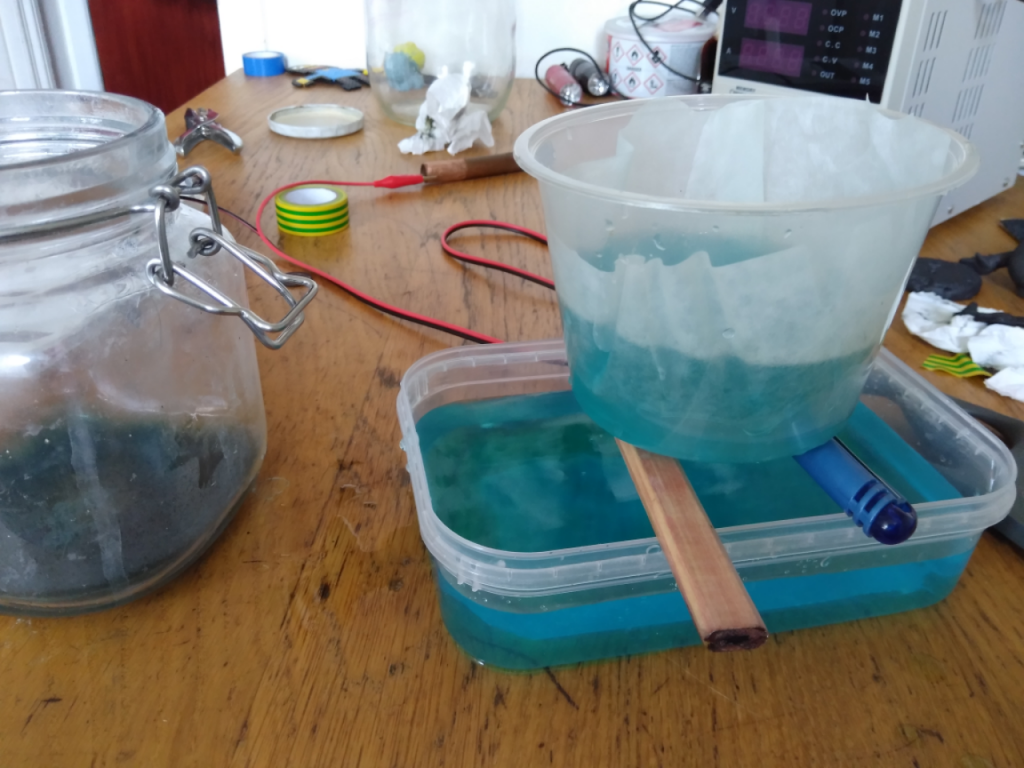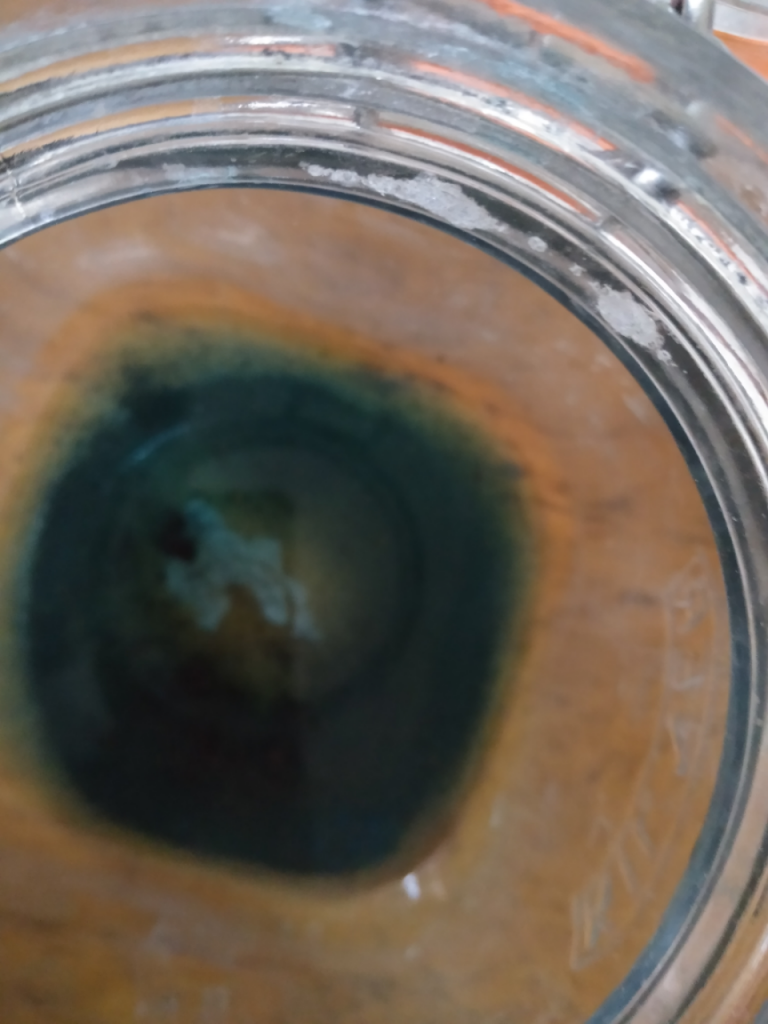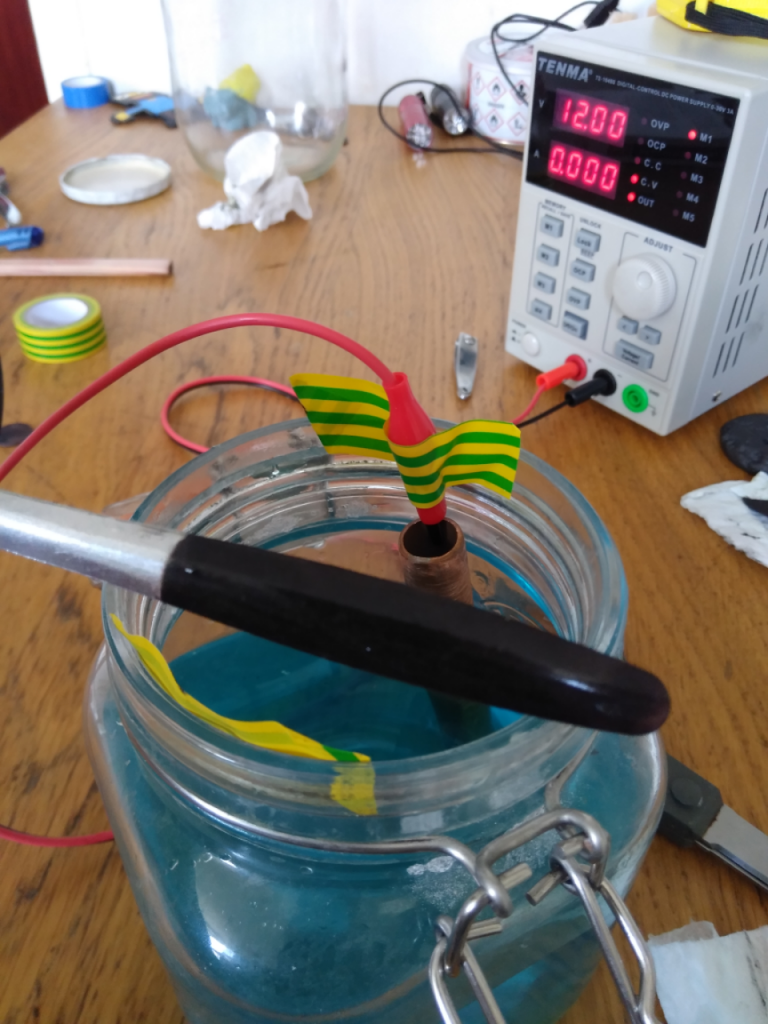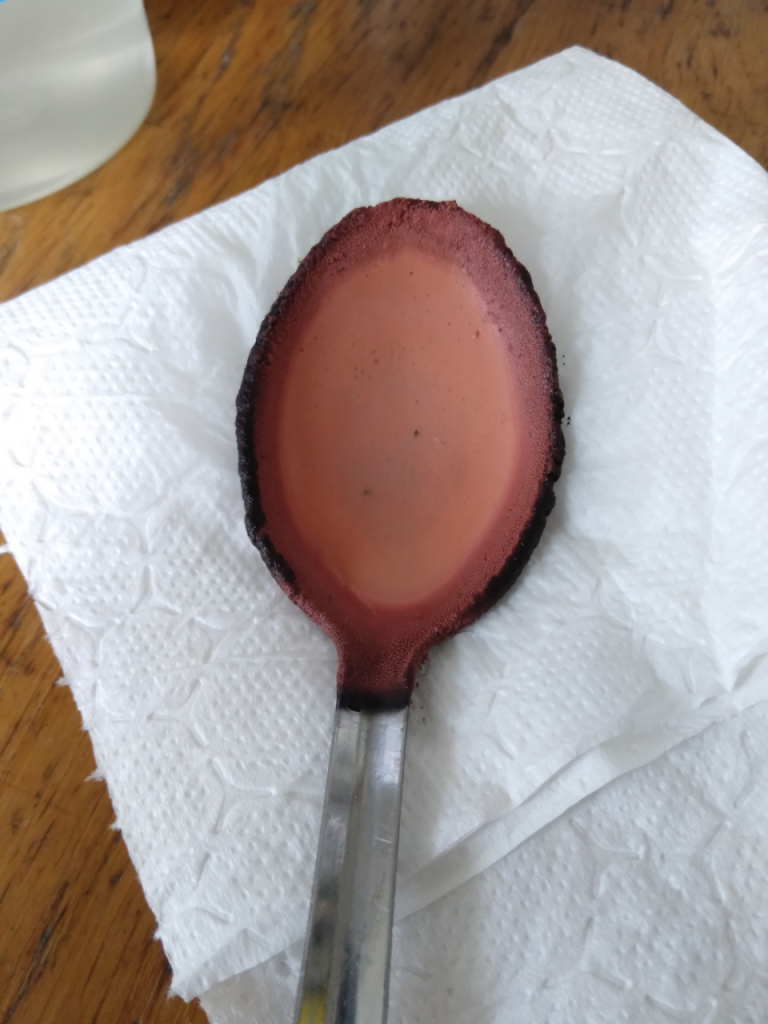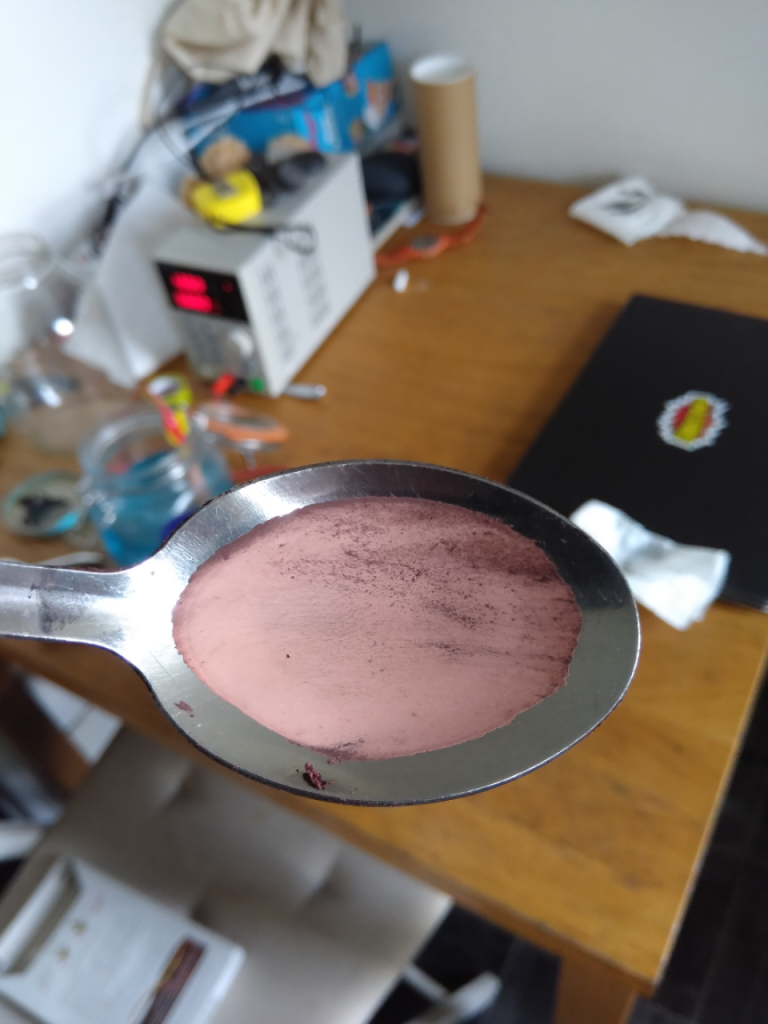It takes me a while to build up to stuff and collect bits… I have been thinking about this since at least April last year.
- A scavenged bit of copper pipe from the street
- Conductive paint
- Copper Sulfate (I bought a load for this any crystal making)
- Variable bench power supply (waited for a pandemic to bring my work home!)
- Something to plate.
We mixed up copper sulfate crystals into solution, till no more would dissolve. Apparently, as you operate the electro-plating circuit, the solution gets stronger anyhow.

So a simple circuit, copper pipe (sanded shiny) on the plus side, object to plate on the minus. You can do this with a 5v phone charger, but because we are not actually plating metal, I thought we would need higher current, hence the bench supply borrowed from work.
Ignore the black blobs, we’ll come back to that in a minute!
We started with a spoon, we got soon got a fine later of copper on it, but I guess it’s stainless steel or something as it wiped off easily. Onto the painted objects. We didn’t start with the biscuit. I had a lingering doubt about the paint and didn’t want to have to fish soggy biscuits out of the solution.
So the good news is that you can see in the image above there is current being drawn through the circuit; the DIY conductive paint is actually conductive. Top marks. ⚡

Bad news.
The bad news is the clear PVA I used for the conductive paint it water-soluble! Surely that’s not PVA? Anyhow, we left if plating for about 40 minutes, and while there was a pinkish tint to what had not become back sludge, it was not impressive and there was lots of loose paint in the mix.
We decided to filter the solution and try again. Using an old pot and a coffee filter, we got out all the graphite, didn’t we? The solution was a lovely clear blue colour again, so must have!!
When we tried the spoon again, it REALLY quickly started to go black, (not pinky). We worked out that the circuit was pulling invisible graphite out of the solution and depositing it on the spoon. I cleaned the spoon a couple of times and then just left it.
Finally, we were amazed (and thankful) that all of the graphite was out of the solution and then the copper plating could start again! See the images at the bottom. Weirdly, the graphite deposited on the outside edge of the spoon bowl (front and back) and wiped off easily, while the copper was on top of this and all over the spoon…
Perhaps the graphite was more closely following the magnetic/electric currents in the solution.
Part 2 to follow.
Where we make conductive paint from proper PVA and try again!

